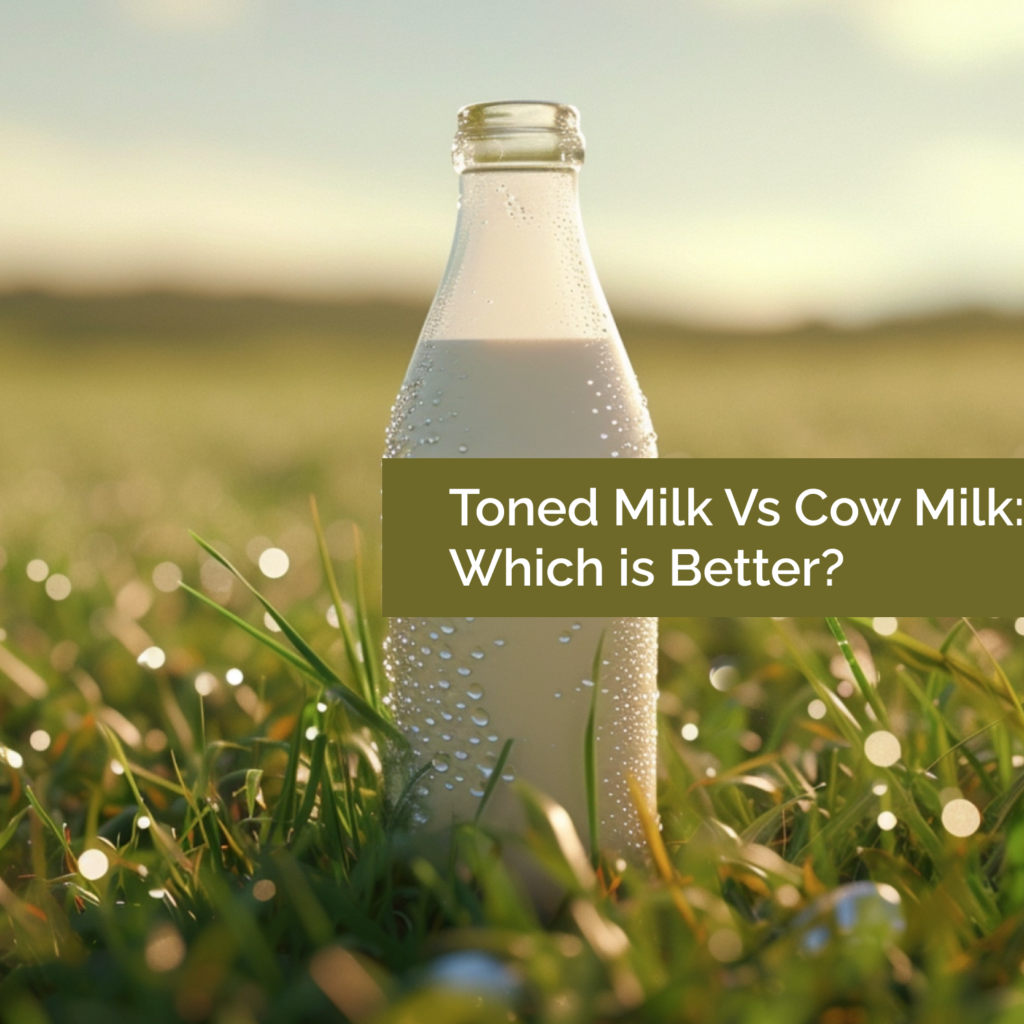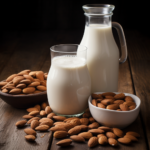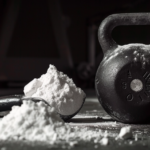What is toned milk ?
Toned milk is a dairy product primarily found in India. It’s made by combining buffalo milk with skim milk and water, resulting in a lower fat content compared to full-cream buffalo milk.
Toned milk, also known as slim milk or low-fat milk, is a dairy product that has been processed to remove a portion of its fat content while retaining most of its nutrients. The process involves skimming off a specific percentage of cream from whole milk to achieve a desired fat content, typically around 3% to 3.5%. This results in a lighter and less creamy consistency compared to full-fat milk.
Toned milk is often preferred by individuals seeking to reduce their fat intake while still enjoying the nutritional benefits of milk, including calcium, protein, and vitamins. It is widely available in grocery stores and is commonly used for drinking, cooking, and baking.
Nutrition components of toned milk
Toned milk retains most of the essential nutrients found in whole milk, albeit with a reduced fat content. Here are the key nutrition components of toned milk:
Calories: Toned milk typically contains around 45-50 calories per 100ml, which is about 30% less than whole milk (60-65 calories per 100ml). This makes it a good choice for people who are trying to lose weight or control their calorie intake.
Phosphorus: Toned milk provides phosphorus, another mineral crucial for bone health and energy metabolism.
Potassium: Toned milk is a good source of potassium, which helps regulate blood pressure, fluid balance, and muscle contractions.
Fat: Toned milk has a lower fat content than whole milk, typically around 3% compared to 3.5-4% for whole milk. This means that it contains less saturated fat, which is a type of fat that can increase the risk of heart disease.
Calcium: Toned milk is rich in calcium, a mineral vital for maintaining strong bones and teeth, as well as supporting nerve function and muscle contraction.
Protein: Toned milk is a good source of protein, with around 3 grams per 100ml. This is the same amount of protein as whole milk. Protein is important for building and repairing tissues, and it can also help you feel full and satisfied after eating.
Carbohydrates: Toned milk contains around 5 grams of carbohydrates per 100ml, which is also the same amount as whole milk. Carbohydrates are your body’s main source of energy.
Vitamins and Minerals: Toned milk is a good source of several vitamins and minerals, including calcium, vitamin D, and riboflavin. These nutrients are important for maintaining strong bones and teeth, supporting the immune system, and converting food into energy.
Overall, toned milk is a healthy and nutritious drink that can be a good alternative to whole milk for people who are trying to lose weight or control their calorie intake. However, it is important to note that toned milk does not contain as much fat-soluble vitamins as whole milk, such as vitamins A and E. If you are concerned about getting enough of these vitamins, you can talk to your doctor or a registered dietitian.
Read Also – Calories in Cream Bun
toned milk vs cow milk vs: Which one is better?
The battle for milk supremacy continues! Whether you’re a fitness fanatic eyeing calorie counts or a flavor aficionado seeking creamy indulgence, choosing between toned and cow’s milk can be a head-scratcher. But fear not, milk enthusiast! Let’s delve into their nutritional profiles and help you crown your personal champion.
Toned Milk
Strengths:
- Calorie Champion: Boasting 30% fewer calories than cow’s milk, toned milk is the clear winner for weight management.
- Protein Powerhouse: Toned milk packs the same protein punch as cow’s milk, keeping you feeling fuller for longer.
- Extended Shelf Life: Thanks to its lower fat content, toned milk enjoys a longer fridge stay, reducing waste and ensuring freshness.
Weaknesses:
- Vitamin Sneak Attack: The fat removal process takes away some fat-soluble vitamins like A, D, and E, requiring you to find these nutrients elsewhere.
- Taste Trade-off: The reduced fat results in a lighter taste and texture, which might not please those who love the richness of cow’s milk.
Cow’s Milk
Strengths:
- Nutrient Powerhouse: Cow’s milk comes packed with vitamins and minerals like calcium, vitamin D, and B vitamins, providing a natural health boost.
- Flavor Fiesta: The full-fat content delivers a richer, creamier taste, satisfying your comfort food cravings and enhancing culinary experiences.
- Natural Choice: Unprocessed and minimally altered, cow’s milk retains its original nutrient profile, potentially offering health benefits beyond fortification.
Weaknesses:
- Calorie Contender: With higher fat content comes a higher calorie count, making it less ideal for weight management goals.
- Shorter Shelf Life: The higher fat content leads to a shorter shelf life, requiring quicker consumption to avoid spoilage.
- Potential Allergies: Cow’s milk protein can trigger allergies in some individuals, requiring alternative choices.
So, Who Wins?
There’s no definitive victor in this battle! The “better” milk depends on your individual needs and preferences:
- Weight Management: Toned milk takes the crown for its lower calorie count.
- Nutrient Balance: Cow’s milk edges out with its natural vitamin and mineral profile.
- Taste Preference: If creamy richness is your jam, cow’s milk wins.
- Dietary Restrictions: For those with allergies, toned milk might be the safer choice.
Remember: Moderation is key! Both toned and cow’s milk can be part of a healthy diet if consumed within your calorie and nutrient requirements. Don’t be afraid to experiment and find your perfect match!
Comparing Milk Types: Skimmed, Toned, Homogenized & Cow Milk
| Feature | Skimmed Milk | Toned Milk | Homogenized Milk | Cow Milk (Whole) |
|---|---|---|---|---|
| Fat Content | < 0.5% | 1.5-3% | 3.25-4% | 3.25-4% |
| Calories (per 100ml) | 30-40 | 45-50 | 60-65 | 60-65 |
| Protein (per 100ml) | 3g | 3g | 3g | 3g |
| Carbohydrates (per 100ml) | 5g | 5g | 5g | 5g |
| Calcium (per 100ml) | 120mg | 120mg | 120mg | 120mg |
| Vitamin D (per 100ml) | Varies | Varies | Varies | Varies (often fortified) |
| Sugar (per 100ml) | Naturally occurring lactose | Naturally occurring lactose | Naturally occurring lactose | Naturally occurring lactose |
| Processing | Fat removed | Fat content adjusted | Fat globules broken down | No processing (except pasteurization) |
| Taste | Lighter, less creamy | Slightly creamy | Creamy, full-bodied | Creamy, full-bodied |
| Applications | Baking, coffee, cereal | Cooking, baking, coffee | All-purpose | All-purpose |
| Health Benefits | Low in calories and fat, good for weight management | Lower in fat than whole milk, retains some fat-soluble vitamins | Easier to digest, longer shelf life, consistent texture | Good source of protein, calcium, and various vitamins and minerals |
| Drawbacks | Lower in fat-soluble vitamins (A, E) | Lower in fat-soluble vitamins than whole milk | May alter taste and texture | Higher in calories and saturated fat than skimmed and toned milk |
Which milk is better for kids below 1 year, cow milk or double toned milk?
Neither cow milk nor double toned milk is appropriate for children under 1 year old. In fact, breastfeeding is the recommended source of nutrition for babies throughout their first year. Breast milk provides the perfect balance of nutrients, antibodies, and immune factors that support their development and protect them from illness.
Here’s why neither cow milk nor double toned milk is suitable for babies under 1:
Cow milk:
- Lacks essential nutrients: It’s deficient in iron, vitamin D, and other key nutrients crucial for babies’ growth and development.
- Difficult to digest: Babies’ digestive systems aren’t mature enough to handle the protein and fat in cow’s milk, which can lead to digestive problems like bloating, gas, and constipation.
- Increased risk of allergies and health issues: Early exposure to cow’s milk protein can increase the risk of allergies, ear infections, and other health problems.
Double toned milk:
- Highly processed: The fat removal process diminishes the bioavailability of some essential vitamins like A, D, and E, important for babies’ development.
- Deficient in nutrients: Similar to cow milk, double toned milk lacks essential nutrients like iron and vitamin D.
- Unsuitable for young babies: Even with added vitamins, double toned milk doesn’t offer the same immunological benefits as breast milk.
Therefore, if breastfeeding isn’t an option, consult your pediatrician about appropriate breast milk substitutes, such as specially formulated infant formula. These formulas are designed to meet the specific nutritional needs of babies and provide essential nutrients they cannot get from cow’s milk or double toned milk.
Remember, never introduce cow’s milk or double toned milk to babies younger than 1 year old without guidance from their pediatrician.
Bonus Tips Milk is a perishable product and tends to spoil if not stored at a holding temperature below 8 degrees C. Therefore it should be boiled before consumption to prevent microbiological contamination. As per a study published in The Journal of American Science, boiling of milk is recommended as follows: - Milk boiling for two minutes provides the consumer the required safety. However, continuous stirring is essential, particularly at boiling temperature, to make sure that the formed foam is exposed to boiling temperature.
Reference url – https://consumeraffairs.nic.in/sites/default/files/file-uploads/ctocpas/TondMilk.pdf
Read Also – WHAT IS PAPAYA SOAP, AND WHAT ARE ITS BENEFITS?







